|
To read this newsletter in other languages, please visit our website.
Para leer este boletín en otros idiomas, visite nuestro sitio web.
ይህንን ዜና መፅሄት በሌሎች ቋንቋዎች ለማንበብ፤ እባክዎን ድረ ገፃችንን ይጎብኙ።
이 소식지를 다른 언어로 읽으려면, 우리 웹사이트를 방문하시기 바랍니다.
.يرجى زيارة موقعنا الألكتروني لقراءة هذه النشرة الإخبارية بلغات أخرى
Hello Community Members!
I hope you are enjoying a fun, safe, and interesting summer.
An important report on public education funding in Virginia was just released by our state General Assembly.
The report finds that:
- Funding for VA schools is below national and regional averages.
- Virginia students receive less funding than estimated needs.
- Funding formulas don't meet what's needed in actual practice.
Many of these findings validate concerns and mirror recommendations made annually by myself and colleagues, as stated here in the Fairfax School Board's annual Legislative Program.
The report was commissioned by General Assembly action in 2021 (page 2 of presentation has more info), directing the Joint Legislative Audit and Review Commission (JLARC) of the General Assembly “to study the true cost of education in the Commonwealth and provide an accurate assessment of the costs to implement the Standards of Quality (SOQs)”. The SOQs encompass the requirements that must be met by all Virginia public schools and school divisions, by law.
So essentially, the General Assembly asked in 2021 if the funding approach – the standard formula – used to fund K-12 education in Virginia meets the standards for public education that it sets forth and holds local school divisions accountable for providing.
Unfortunately, but not surprisingly, the answer is, “No”, the Virginia General Assembly’s funding formula does not adequately fund what is needed for high quality public education in Virginia.
Among the many findings, the report now proves that:
-
Virginia school divisions receive less K–12 funding per student than divisions in other states: this includes those in geographic proximity.
Above graphic from page 5 of the JLARC K12 Funding Formula Report
-
State funding decisions for education aren’t based on best practice and rationale: Many of the funding formula’s inputs and assumptions lack a clear rationale and do not reflect prevailing practice in school divisions. In fact, the study finds that Virginia school divisions receive less funding per student than what three Virginia-specific benchmarks indicate may be needed.
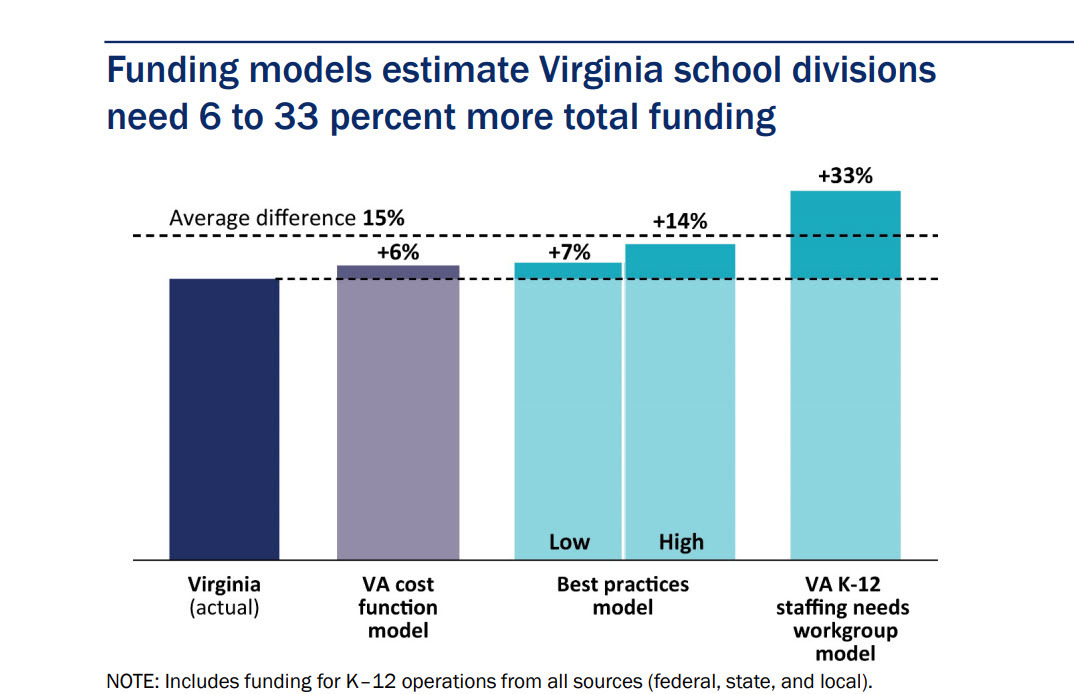
Above graphic from slide 22 of the JLARC Study Presentation
-
Fairfax is disadvantaged by the current state funding formula: The funding formula does not adequately account for higher needs students, regional labor costs, and division size; yet these are the three main cost drivers outside a division’s control, especially in Fairfax county. Specifically, the cost of competing adjustment (COCA) provided to address higher regional labor costs uses old data (1995) and excludes several divisions.
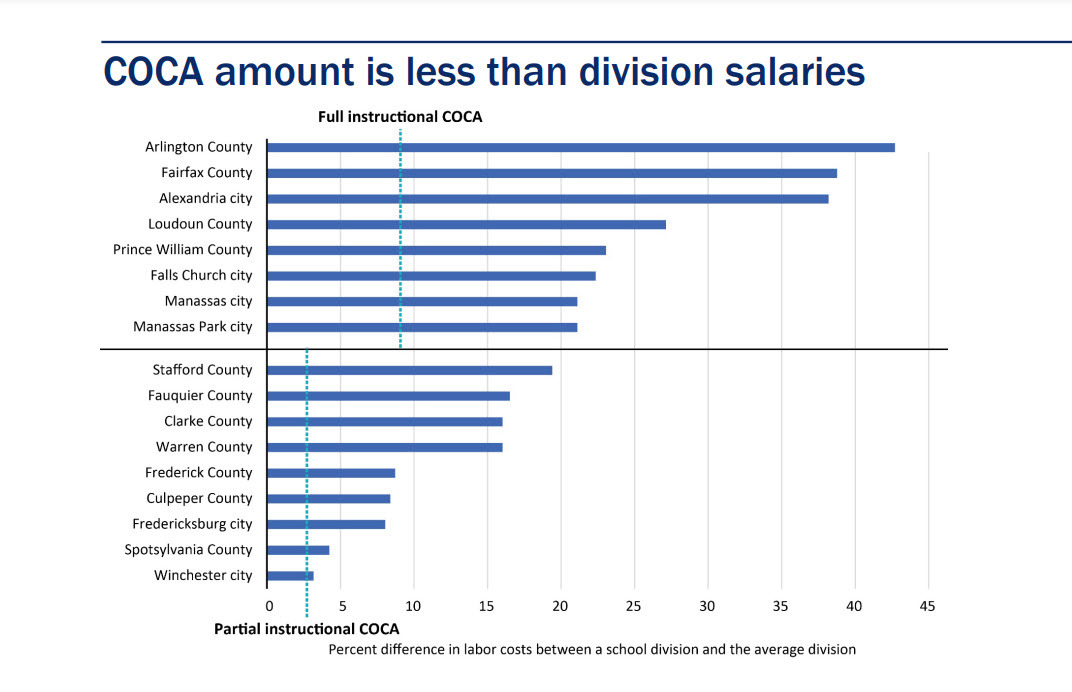 Above graphic from slide 57 of the JLARC Study Presentation
-
Most other states use a better funding approach. Most other states use a student-based K–12 funding formula, which is simpler than Virginia’s complex staffing-based formula.
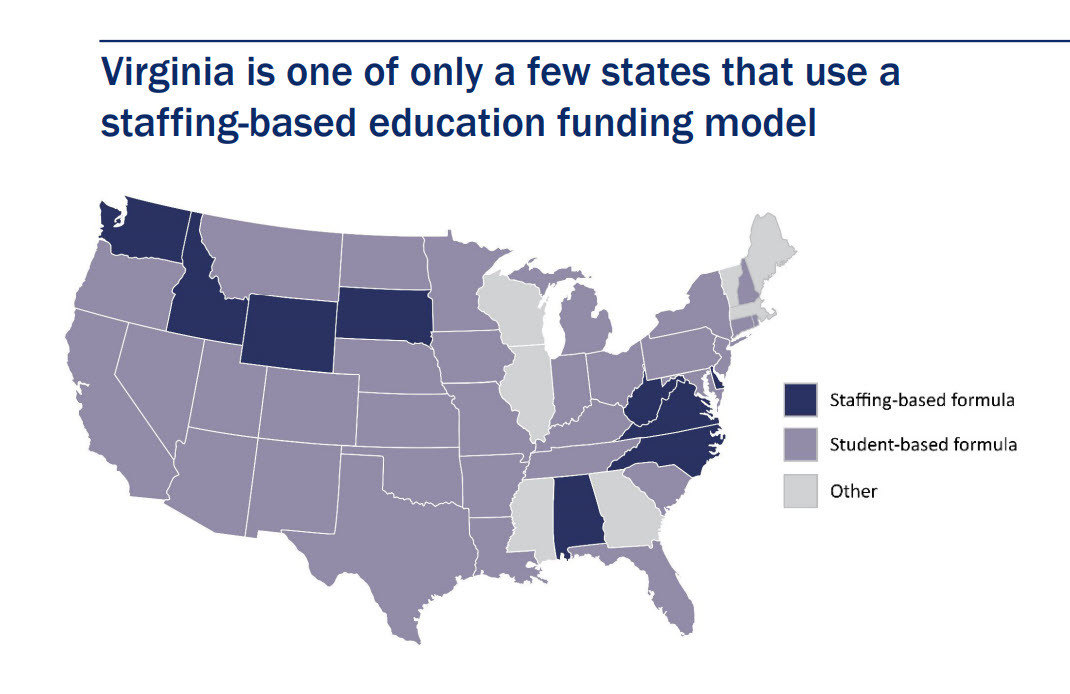 Above graphic from slide 76 of the JLARC Study Presentation
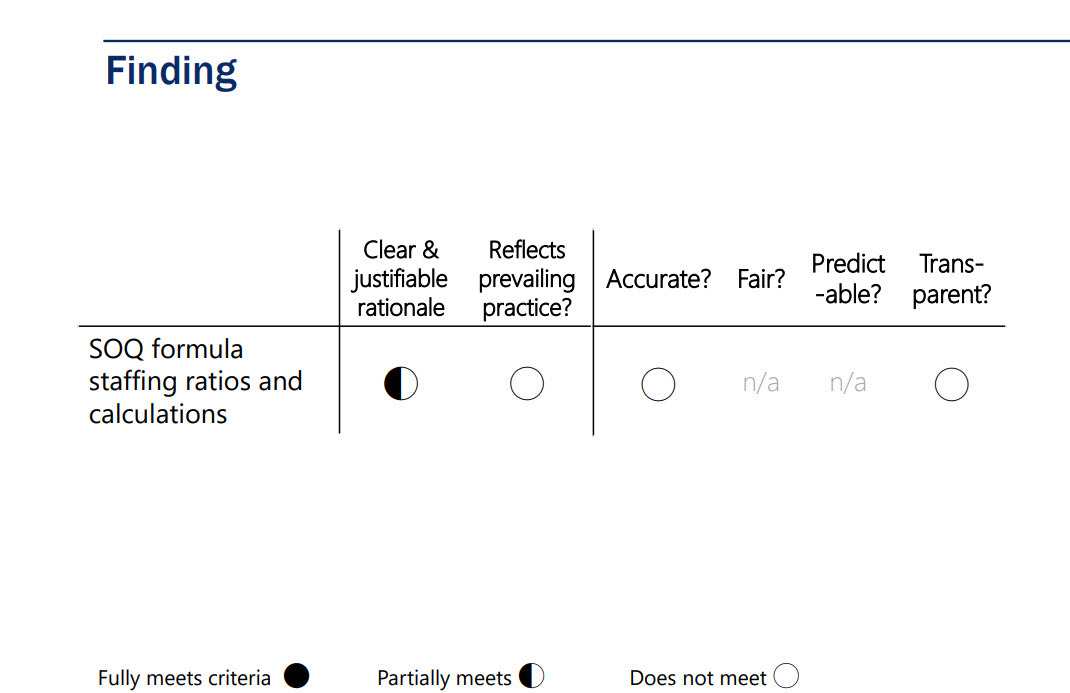
Above graphic from slide 29 of the JLARC Study Presentation

Above graphic from slide 30 of the JLARC Study Presentation

Above graphic from slide 31 of the JLARC Study Presentation
-
State funding per student for higher needs students is less than several relevant benchmarks: Funding has actually declined for special education, which is known to require more investments for student success.

Above graphic from slide 48 of the JLARC Study Presentation
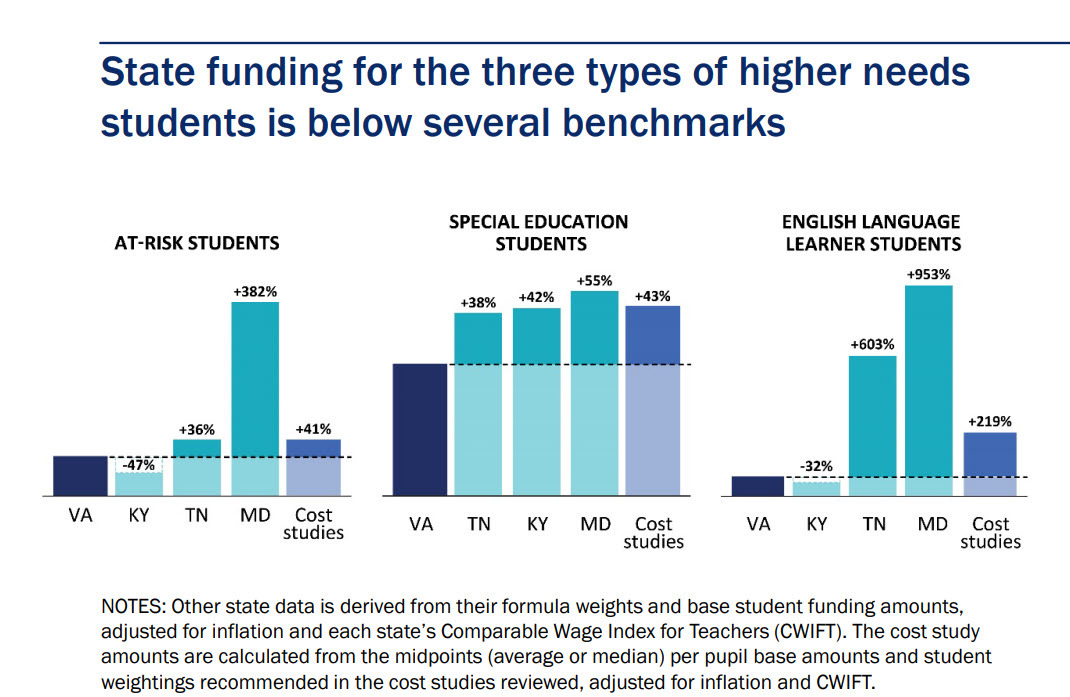
Above graphic from slide 49 of the JLARC Study Presentation
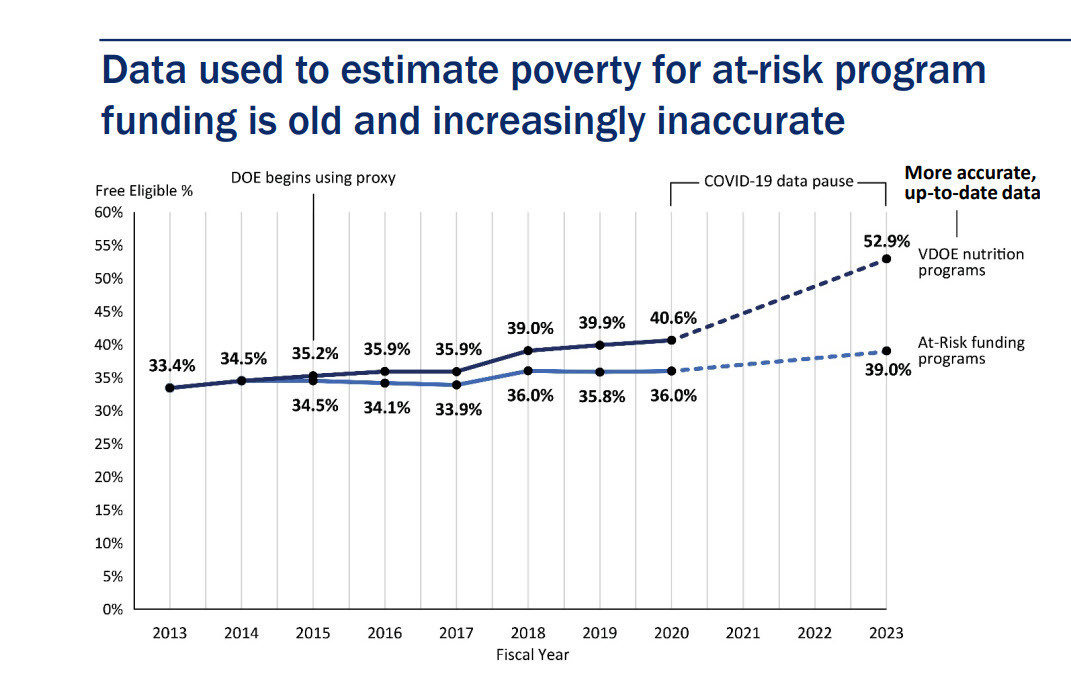 Above graphic from slide 52 of the JLARC Study Presentation
It is sobering to read the wealth of data and findings that show the need for state investment in our public education system.
However, the report does provide recommendations that the General Assembly can take to begin to remedy the decades of underfunding of students’ success in the Commonwealth. These recommendations mirror the concerns and recommendations consistently outlined by the Fairfax County School Board in our annual Legislative Program.
The Virginia General Assembly is made of two bodies: the House of Delegates and the Senate. Each Virginia resident is represented by one of each. Elections for all seats in the House of Delegates occur every two years, because each Member serves a two-year term without term limits. November 2023 is the next such election. Elections for the Senate seats rotate, which each Member serving a six-year term. Some seats will be on the ballot in the November 2023 election.
 Above graphic from slide 12 of the JLARC Study Presentation
Contacting Me
I prioritize responses to Hunter Mill constituents, so please be sure to identify yourself as such if you contact me. If you are unsure of your county magisterial district, you can look that information up here.
To contact me, it is most helpful to please use the official School Board contact form. This form prioritizes emails to me from constituents, and helps me track communication so I can be sure you receive a response. Thank you for your cooperation.
Please take good care,

Was this email not addressed to you? Sign up for my newsletters here!
The views contained within this newsletter reflect the views of the individual school board member who is the publisher of this newsletter and may not reflect the views of the Fairfax County School Board.
© Fairfax County Public Schools, Fairfax County, Virginia
|